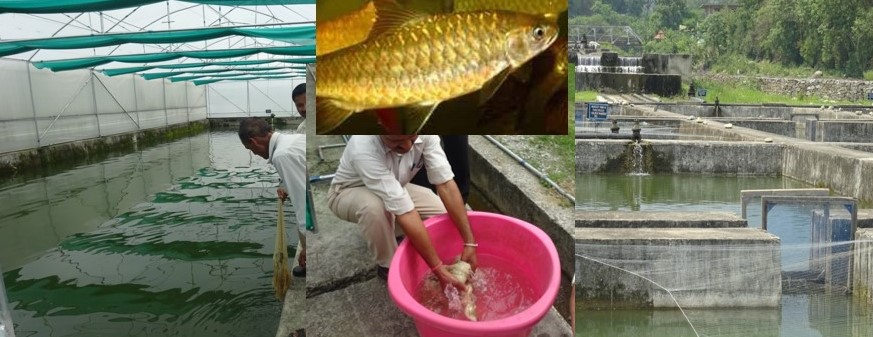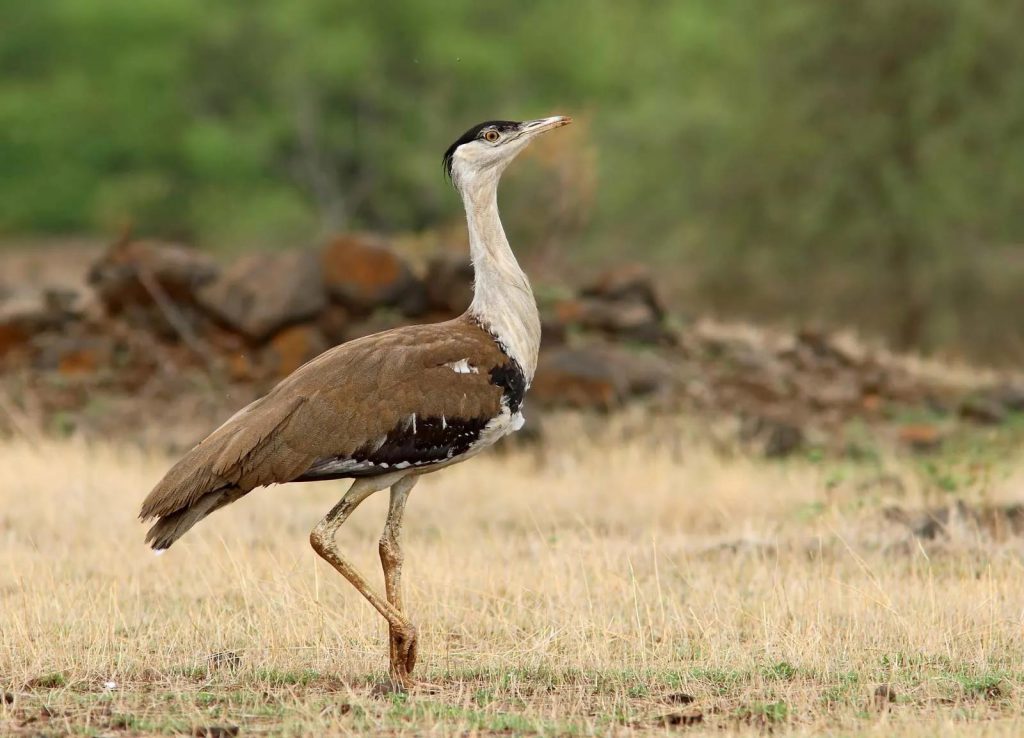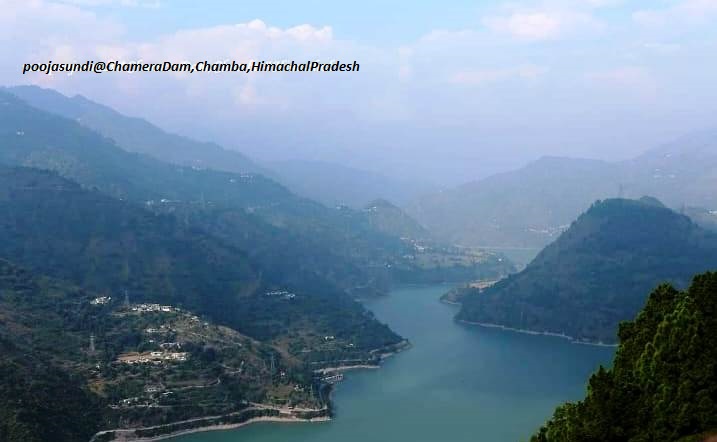NHPC Blog
अंक की तस्वीर
महसीर मछली फार्म – मछियाल, जिला मंडी, हिमाचल प्रदेश
पार्वती-II (800 MW) पावर स्टेशन, हिमाचल प्रदेश के पर्यावरण प्रबंधन योजना के तहत मछियाल, जिला मंडी, हिमाचल प्रदेश में महसीर फार्म को विकसित किया गया है। फार्म में उत्पादित फिंगरलिंग्स का उपयोग ब्यास नदी और पार्वती चरण- II पावर स्टेशन के जलाशय के डाला (stocking) जाता है।
पर्यावरण वार्ता (अंक 19 )
दीपपर्व की मैं एनएचपीसी परिवार, सभी हितधारकों तथा इस ब्लॉग के सभी पाठकों को हार्दिक शुभकामना प्रदान करता हूँ।
भारतीय संस्कृति का सबसे प्रमुख आयाम है जोड़ना। यही दीपावली पर्व भी परिलक्षित करता है। ‘दीप’ अर्थात प्रकाशमान दीपक और ‘आवली’ का अर्थ होता है ‘पंक्ति’। प्रकाश और पंक्ति दोनों ही ऐसे प्रतीक हैं जो राष्ट्रनिर्माण की प्रक्रिया मे लोक-भागीदारी को सुनिश्चित करते हैं। अमावस्या को मनाया जाने वाला यह पर्व प्रतीक है कि अंधेरा कितना ही गहरा हो छोटे छोटे दीपकों की पाँति इससे लड़ने मे सक्षम है हमें केवल एकजुट होना है, दीप से दीप जलाना है। यही कारण है कि दीपावली का पर्व हमें कर्मठता का संदेश देने मे भी समर्थ है जैसा कि पूर्व प्रधानमंत्री और कवि श्री अटल बिहारी बाजपेयी की कविता की पंक्तियाँ भी हैं –
हम पड़ाव को समझे मंज़िल,
लक्ष्य हुआ आँखों से ओझल,
वतर्मान के मोहजाल में,
आने वाला कल न भुलाएँ;
आओ फिर से दिया जलाएँ।
जल से विद्युत का निर्माण करते हुए एनएचपीसी इस देश को प्रकाशमान और गतिशील करने में अपनी पूरी क्षमता और निष्ठा से लगी हुई है। हमें इस बात का गर्व है कि आज जब देश का कोना- कोना और गाँव-गाँव सम्पूर्ण विद्युतीकरण के लक्ष्य को प्राप्त करने की दिशा मे अग्रसर है तो इस कार्य में हमारी संस्था द्वारा किया गया महत्वपूर्ण योगदान भी एक महत्व रखता है। विद्युत है तो प्रगति का प्रकाश है, इसलिए हम गर्व के साथ यह मानते हैं कि हमारा उद्यम, प्रत्येक दिवस को दीपावली की तरह मनाने के लिए है।
पुनश्च हार्दिक शुभकामनाएँ।
(वी. आर. श्रीवास्तव)
कार्यपालक निदेशक
पर्यावरण एवं विविधता प्रबंधन विभाग
Image source: https://www.bbcgoodfood.com/howto/guide/what-is-diwali-and-how-is-it-celebrated
E-WASTE: How dangerous is it?
Electronic waste or e-waste is essentially old, end-of-life electrical and electronic equipment (EEE) that users have discarded. There exists three types of e-waste: White that include refrigerators, washing machines and air-conditioners; Brown that includes televisions, cameras and recorders and Grey that includes computers, laptops, cell phones and printers. Toxic substances like lead, mercury, lithium, cadmium, plastics, nickel, barium, beryllium, chromium etc. form an integral part of e-waste. All of the aforementioned metals have dangerous effects on brain, nervous, blood, reproductive, respiratory and urinary systems.
It is a fact that a tonne of electronic waste can give us hundred times more gold than a tonne of gold ore. It is worth mentioning that today; India is facing a herculean task of disposing its discarded mobiles, fridges, TV sets and computers filled with toxic substances. It is estimated that India has over one billion devices in active use. The average life cycle of phones is about three to four years. In addition, India is today the world’s third-largest producer of e-waste-at 3.2 million tonnes, after China (10 million tonnes) and the USA (6.9 million tonnes). It is estimated that the graph of production of e-waste will be an exponential one. Conclusively, it can be inferred that somewhere there exists a planet-sized dump.
If such waste is not disposed properly, toxic materials will contaminate soil, water, air and will find their way into our food chain. In view of this, modern societies have developed the concept of circular economy, dedicated to reusing, recycling and regeneration. ‘Urban mining’- a name coined by Japanese mineralogist Hideo Nanjyo has become globally popular. The growing volume of electronic waste is overwhelming the informal kabadi industry and threatening our health and environment.
But the challenges of e-waste management can also be a huge opportunity in doing start-ups. Therefore, lets ponder about it.
-by
Shreya
Deputy Manager (Environment), Corporate Office, NHPC
References:
- India Today- E-waste mounting threat- September 12, 2022.
- E-waste management in India- CSE report, 2020.
कुकरौन्धा (ब्लूमिया लैसेरा)- एक औषधीय पौधा विशेषत: बवासीर निदानक
आजकल की व्यस्त दिनचर्या में मनुष्य अपने खान-पान पर ध्यान नहीं दे रहा है । परिणामस्वरूप वह अनेक व्याधियों से ग्रसित होता जा रहा है। हालाँकि आज के वैज्ञानिक युग में रोगों के निदान के लिए आधुनिक रासायनिक दवाएं एवं शल्य चिकित्साएँ उपलब्ध हैं, किन्तु फिर भी पादप औषधियाँ अनेक रोगों के निदान के लिए कारगर सिद्ध होती हैं क्योंकि वह या तो परंपरा पर आधारित हैं या युगों से जनजातियों एवं लोकमान्यताओं द्वारा प्रयोग में लाई जा रही हैं । ऐसी ही एक औषधीय पादप जाति कुकरौन्धा (ब्लूमिया लैसेरा) है जो अनेक रोगों के निदान के लिए प्रचलित एवं कारगर है । विशेषतः उत्तर एवं मध्य भारत में इसका उपयोग बवासीर के निदान के लिए अत्यधिक प्रचलित है ।
विशेषता-
कुकरौन्धा एस्टेरेसी कुल का सदस्य है । यह उत्तर प्रदेश, मध्य प्रदेश, महाराष्ट्र, आंध्र प्रदेश, पंजाब, हरियाणा, राजस्थान, गुजरात, सिक्किम, पश्चिम बंगाल, बिहार तथा ओडिशा में बहुतायत से मिलता है । यह एकवर्षीय, उच्छीर्ष पौधा है जिसकी ऊँचाई 30 से 80 सेमी होती है । तने पर घने ग्रंथिल रोम होते हैं । पत्तियां सरल, एकांतरक्रम में व्यवस्थित तथा दीर्घवृतीय होती हैं । इनके किनारे अच्छिन्न अथवा पालित, शीर्ष निशिताग्र तथा पालियाँ अनियमित रूप से ऋकची-दन्तुर होती हैं । ये 3 से 13 सेमी लंबी तथा 1.2 से 5 सेमी तक चौड़ी हो सकती हैं तथा इनकी दोनों सतहों पर ग्रंथिल रोम पाए जाते हैं । कुकरौन्धा में मुण्डक पुष्पक्रम मिलता है जिनका व्यास लगभग 3.5 सेमी होता है तथा ये अक्षीय एवं शीर्षस्थ समूहों में व्यवस्थित होते हैं । रश्मिपुष्पक लगभग 3 मिमी लंबे एवं बिम्बपुष्पक 3.5 मिमी लंबे होते हैं । एकीन लगभग 0.5 मिमी लंबे तथा रेखीय होते हैं ।
रोगों में प्रयोग/ औषधीय उपयोग-
बवासीर में प्रयोग के लिए इसकी पत्तियों को छाँव में सुखाकर पीस लेते हैं । पिसी हुई पत्तियों को कागज में लपेटकर सिगरेट की तरह बनाकर भोजन के उपरांत पीने से बवासीर में आराम मिलता है । साथ ही साथ इस सूखे चूर्ण को भोजन के उपरांत पानी के साथ निगलने से भी लाभ होता है । दूसरी ओर इसकी ताजी पत्तियों को पीसकर बनाए गए लेप को कपड़े के टुकड़े में लगाकर गुदा पर रखने से भी लाभ मिलता है ।
इसके अतिरिक्त यह पौधा कई अन्य रोगों के लिए भी उपयोगी है । इसकी पत्तियों को पीसकर लेप को कटी-छिली त्वचा तथा घावों पर लगाने से लाभ मिलता है । इसकी पत्तियों का रस आंतों में पाए जाने वाले कृमियों को बाहर निकालने में भी उपयोगी पाया गया है । साथ ही साथ पत्तियां ज्वरनाशक, प्रदाहनाशक, वायुनाशक तथा यकृत रोगों में भी लाभकारी होती हैं । उपरोक्त उपयोगों के अतिरिक्त यह पित्त एवं कफ, उदरपीड़ा, श्वेतप्रदर, फेफड़ों की सूजन, हैजा तथा श्लेष्मा के प्रदाह में भी लाभकारी होता है ।
— द्वारा
डॉ. अजय कुमार झा
वरिष्ठ प्रबन्धक (पर्यावरण), तीस्ता-VI जलविद्युत परियोजना
Sangai Brow-Antlered Deer: Some Important Facts
Common Name: Sangai, Brow Antlered Deer, Dancing Deer
Scientific Name: Rucervus eldii
About: It is the state animal of Manipur. Sangai is a medium-sized deer, with uniquely distinctive antlers, with extremely long brow tine, which form the main beam. The forward protruding beam appears to come out from the eyebrow. This signifies its name, brow-antlered deer. The animal’s coat is dark reddish brown during winter months and it bears a much lighter shade in summer. The height is about 115-130cm (Males), 90-100cm (females) and weighs about 90-125kg (Male), 60-80 kg (Female). It is native to Cambodia, China, India, Laos and Myanmar.
Habitat: Its habitat is restricted to the marshy wetland of Keibal Lamjao over the floating biomass in Loktak Lake which is locally called ‘phumdi’. The habitat of the sangai is now protected as the ‘Keibul Lamjao National Park’. Keibal Lamjao is the only floating National Park in India. Sangai often balances itself while walking on the floating biomass which looks as if it is dancing on the green grassland and hence the name of ‘dancing deer’ of Manipur has come into existence.
Status: State animal of Manipur, Schedule-1 of Wildlife (Protection) Act, 1972, Endangered on IUCN Red List.
Sangai festival: It is an annual cultural festival organised by Manipur Tourism Department every year from 21st to 30th November. Many editions of this Festival have been celebrated over the past few years with the name of ‘Tourism Festival’, however since 2010 this has been renamed as the Sangai Festival to emphasize the uniqueness of this shy and gentle brow-antlered deer.
-by
Angelo Jaya Sheeli Domathoti
Manager (Environment), Corporate Office, Faridabad
Reference: https://www.drishtiias.com,
https://en.wikipedia.org/wiki/Main_Page, https://www.wwfindia.org/about_wwf/priority_species/threatened_species/brow_antlered_deer/
Great Indian Bustard- State Bird of Rajasthan
Great Indian bustard, (Ardeotis nigriceps) is a large bird of bustard family (Otididae) and is one of the heaviest flying birds in the world. Once, a contender for National Bird of India; now is the State Bird of Rajasthan and is locally called Godawan. It was once a contender for National Bird of India. Its habitat, spreads across grasslands of the states of Rajasthan, Gurjarat, Maharashtra, Andhra Pradesh, Karnataka and Madhya Pradesh.
Great Indian bustards are tall birds with long legs and a long neck; the tallest individuals stand up to 1.2 metres (4 feet) and can weigh upto 15 kg. Males and females are distinguished by the colour of their feathers. In males, the feathers on the top of the head are black with whitish neck, breast, and underparts, along with brown wings highlighted by black and gray markings. Males are characterized by a small, narrow band of black feathers across the breast. In contrast, females possess a smaller black crown on the top of the head, and the black breast band is either discontinuous or absent.
Great Indian bustards are omnivores and feed on any palatable food available in their immediate surroundings; e.g. arthropods, worms, small mammals, small reptiles, insects, seeds and peanuts. Adult great Indian bustards have few natural enemies. The only animals that have been observed to attack them are gray wolves (Canis lupus) and the chicks are preyed upon by jackals and dogs. Eggs are sometimes stolen from nests by foxes, mongooses, monitor lizards, etc. But the greatest threat to the eggs are from trampling by grazing cows, sheep, etc.
In 1994, the Great Indian bustard was listed as an endangered species on the International Union for Conservation of Nature’s (IUCN) Red List of ‘Threatened Species’. By 2011, however, the population decline was so severe that the IUCN reclassified the species as critically endangered, which is a matter of concern. The population since then is on decline and now less than 120 birds occurs in the state of Rajasthan. The Project Great Indian Bustard, was launched by Chief Minister of Rajasthan on 5th of June 2013 which has brought back focuses on conservation of the bird especially within the Desert National Park, Jaisalmer, Rajasthan. However, it has not seen much success so far mainly due to loss of habitat i.e. grassland in the state and damage to the eggs of this critically endangered species.
-by
Dr. Anuradha Bajpayee
Group Senior Manager (Environment), corporate office, NHPC
Reference:
- http://www.edgeofexistence.org/species/great-indian-bustard/
- https://www.iucnredlist.org/species/22691932/134188105
- https://en.wikipedia.org/wiki/Great_Indian_bustard
- https://economictimes.indiatimes.com/news/india/the-great-indian-bustard-once-in-the-race-to-become-national-bird-now-struggling-for-existence/articleshow/94730994.cms
कविता : निर्बाध हूँ मैं
| निर्बाध हूँ मैं……..
उमड़ने दो कि हूं मैं नदी इस ओर से उस छोर तक बहुत ही लंबा सफर है मेरा मैं हूँ बेकल-मनचली— सागर से मिलने की तमन्ना लिए बह रही हूं अनवरत उस सदी से इस सदी निर्बाध हूँ मैं, ना बांधो मुझे उमड़ने दो कि हूं मैं नदी
निर्बाध हूं मैं…….. बहने दो कि हूं मैं हवा पेड़ों-पहाड़ों-बादलों झीलों-झरनों-बागों में भरने दो मुझे चौकड़ी मैं हूं मनमौजी-आवारा तंग गलियों में है घुटता दम मेरा न रंग है, न रूप ही बन जाती हूं वैसी जैसी जब जहां जिसने है रखा निर्बाध हूं मैं, न रोको मुझे बहने दो कि हूं मैं हवा
|
निर्बाध हूं मैं …….
लहराने दो कि हूं मैं सागर घमंडी-गुस्सैल-विकराल शांत-अथाह-उदार न रखता किसी का दिया कुछ कर देता हूं उसको जिसका है वापस बादलों का संदेशा भेज पर्वतों को बरसा कर बदरिया प्रेम-रस भर देता हूँ धरती का गागर निर्बाध हूं मैं, न छेड़ो मुझे लहराने दो कि हूं मैं सागर
निर्बाध हूं मैं ….. खिलने दो कि हूं मैं प्रकृति मुझसे तुम हो, तुमसे मैं मैं जीवनदायी -पालनहारी रहने दो मुझे वैसी ही जैसी मैं सदियों से थी रही निर्बाध हूं मैं, न टोको मुझे खिलने दो कि हूं मैं प्रकृति
पूजा सुन्डीउप प्रबंधक (पर्यावरण)पर्यावरण एवं विविधता प्रबंधन विभाग |






